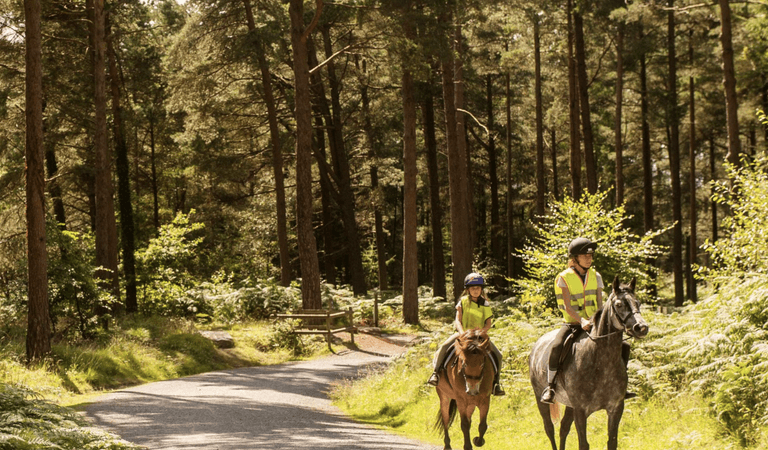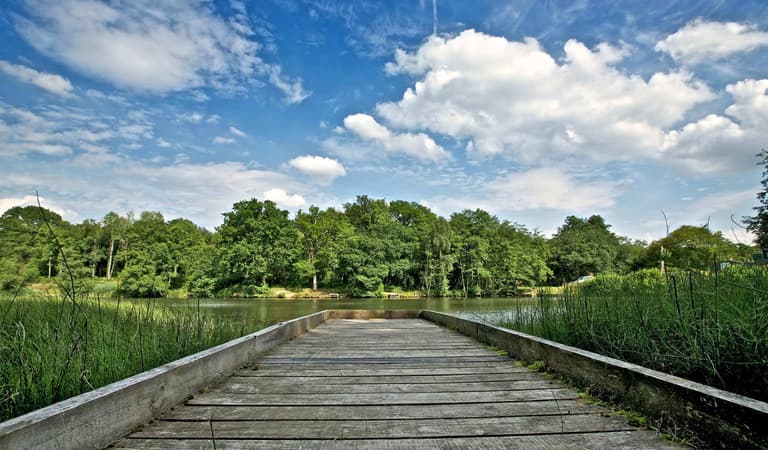
Paddle into Summer!
Everything, you need to know about canoeing, kayaking, and paddle boarding on the stunning River Wye at Symonds Yat West!
In the Forest of Dean and Wye Valley
If it’s nature you’re after, you’ve come to the right place. The Forest of Dean and Wye Valley is one of the most naturally rich and scenic destinations in the UK - home to ancient woodland, wildflower meadows, river valleys, lakes, and panoramic viewpoints a plenty.
Whether you're here to spot wildlife, take in the seasonal changes, or simply enjoy the peace that comes with time outdoors, you’ll find countless ways to connect with the natural world. From easy-access nature trails and RSPB reserves, to stargazing spots and guided wildlife walks, this is a landscape that rewards slowing down and looking closer.
In this section, you’ll find a handpicked collection of accommodation, experiences, attractions and places to eat that help you stay close to nature - from off-grid retreats and eco-stays to outdoor cafés and activity providers that celebrate the beauty of the landscape around them.
Explore below and plan a visit that puts nature first - whether you're wandering through bluebells, watching wild boar at dusk, or simply listening to birdsong from your cabin doorstep.
Wye Valley Falconry is the brainchild of Luke Mammatt, a Falconer from Hereford who has worked at a… Wye Valley Falconry is the brainchild of Luke Mammatt, a Falconer from Hereford who has worked at a number of centres around the UK over a 14 year career.
Enjoy a cruise on the River Wye through the beautiful Wye Valley from Symonds Yat East. Sit back,… Enjoy a cruise on the River Wye through the beautiful Wye Valley from Symonds Yat East. Sit back, enjoy the scenery and relax. Dogs welcome. Group bookings with onboard…
Black Rock is on the Monmouthshire coastline of the Severn Estuary between the two Severn bridges… Black Rock is on the Monmouthshire coastline of the Severn Estuary between the two Severn bridges with fantastic panoramic views of the estuary and both bridges.
Famous for its carpets of spring wildflowers and peaceful trails, Dymock Woods is a beautiful spot… Famous for its carpets of spring wildflowers and peaceful trails, Dymock Woods is a beautiful spot to enjoy a slower pace and reconnect with nature.
A haven for wildlife and the surrounding paths are suitable for the less able and wheelchair users A haven for wildlife and the surrounding paths are suitable for the less able and wheelchair users
With trails for all abilities, this is the perfect place to start your cycling adventure in the… With trails for all abilities, this is the perfect place to start your cycling adventure in the Forest of Dean.
A spacious campsite and caravan park with glamping pods nestled among majestic oaks, stunning… A spacious campsite and caravan park with glamping pods nestled among majestic oaks, stunning copper beech and tall pine trees. Located on the edge of the Forest of Dean,…
An arboretum full of unusual and interesting trees in the heart of the Forest of Dean next to the… An arboretum full of unusual and interesting trees in the heart of the Forest of Dean next to the Speech House Hotel.
Select a Timeframe:
Date From:
Date To:
Dates:
31st May 2025 - 31st May 2025
We've teamed up with Ed Drewitt, naturalist, broadcaster and wildlife detective to provide… We've teamed up with Ed Drewitt, naturalist, broadcaster and wildlife detective to provide fascinating, entertaining and hopefully fun Wildlife Safaris around the Forest of…
Dates:
10th May 2025 - 18th May 2025
This annual festival is based in & around the town of Coleford in the Forest of Dean, with walks… This annual festival is based in & around the town of Coleford in the Forest of Dean, with walks organised for all abilities ages & capabilities. With a varied walk programme…
Dates:
17th May 2025 - 17th May 2025
Liz Knight has spent the last 10 years gathering and playing with wild food. Her courses are… Liz Knight has spent the last 10 years gathering and playing with wild food. Her courses are designed to open you eyes to how the commonest of weeds can be transformed into…
Dates:
10th May 2025 - 10th May 2025
Ed is a naturalist, broadcaster and wildlife detective. He will take you for a two and a half hour… Ed is a naturalist, broadcaster and wildlife detective. He will take you for a two and a half hour walk from Tudor Farmhouse Hotel to find the edible goodies available…
Event Dates:
10th May 2025 - 10th May 2025
Enjoy an evening stargazing with Jim on the hill at Tudor Farmhouse Hotel.…
View EventWhether you're a seasoned cyclist or just fancy a pootle through peaceful countryside, the Forest… Whether you're a seasoned cyclist or just fancy a pootle through peaceful countryside, the Forest of Dean and Wye Valley offers something for everyone on two wheels.
Our guide to 12 easy walks in the Forest of Dean and Wye Valley gives you a gentle introduction to… Our guide to 12 easy walks in the Forest of Dean and Wye Valley gives you a gentle introduction to the region and some simple routes to get you started exploring.
Duration: 1 Hour
Distance 2.2 Miles
Explore Ross-on-Wye with this easy riverside and town walk. Discover historic landmarks, the River… Explore Ross-on-Wye with this easy riverside and town walk. Discover historic landmarks, the River Wye, The Prospect gardens and independent shops along the way.
Follow the Film & TV Trail in the Forest of Dean and Wye Valley. Visit real filming locations from… Follow the Film & TV Trail in the Forest of Dean and Wye Valley. Visit real filming locations from Star Wars, Harry Potter, Sex Education, Merlin and more. Discover why film…
Everything, you need to know about canoeing, kayaking, and paddle boarding on the stunning River Wye at Symonds Yat West!
Discover canoeing, kayaking and paddleboarding on the River Wye in the Forest of Dean and Wye Valley - from gentle paddles to full-day and multi-day trips.
Read moreDiscover the best places in the UK to see bluebells in the Forest of Dean and Wye Valley, with peaceful woodland walks and seasonal displays across the region.
Read more

















